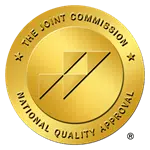Overview
Addiction and Recovery
Addiction, a condition that intricately intertwines both physiological and psychological aspects, creates a scenario where the body and mind become deeply reliant on substances or certain behaviors.
This dependence is not just a physical craving; it extends into the realms of emotional and mental health, often becoming a maladaptive way to cope with life’s challenges.
Addiction reshapes the brain’s chemistry and alters its response to pleasure and stress, making it a profoundly personal and complex experience.
Recovery, on the other hand, is far more than just the cessation of substance use or addictive behaviors.

It is an arduous and courageous journey of transformation that demands considerable strength, support, and resources.
Recovery is about healing holistically—it involves mending the physical damages of addiction, addressing underlying psychological issues, and rebuilding one’s life into something healthier and more fulfilling.
This process requires not only internal resolve but also the support of a conducive external environment.
The Environment’s Role
The environment’s role in both the onset of addiction and the path to recovery cannot be overstated.
It includes a wide array of factors—the influence of social and family relationships, the impact of physical spaces, and the support or lack thereof in community settings.
An empathetic and supportive environment acts as a strong pillar in the recovery process. It provides a safe space for individuals to heal, grow, and relearn healthy coping mechanisms.
Conversely, an environment filled with triggers or lacking understanding can significantly impede recovery efforts, and in some cases, even lead to relapse.
In this exploration of the pivotal role environment plays in addiction recovery, I seek to underscore the profound significance of cultivating supportive surroundings.
This mirrors the proven methodology employed here at The Encino Detox, as we meticulously design our addiction recovery programs in Los Angeles, ensuring a tailored and effective path to healing.
Understanding and adapting these environmental factors is essential in aligning with the multifaceted journey towards healing and sobriety.
This calls for a collaborative effort—from family members, friends, healthcare professionals, and community resources—all playing a vital role in creating an environment conducive to recovery and long-term well-being.

What Is Addiction?
Addiction is often characterized as a chronic, relapsing disorder.
It’s a multifaceted condition that involves:
- Compulsive engagement in drug-seeking or certain behaviors
- Persistent use despite detrimental consequences
- Enduring alterations in brain function and structure.
It becomes apparent that this intricate condition extends beyond the simple physical craving for substances or habitual behaviors; it is a multifaceted challenge acknowledged as both a profound brain disorder and a mental illness.
Understanding the nuances of the stages of addiction is crucial in developing comprehensive approaches to treatment and recovery

Psychological and Environmental Factors Are Intertwined
The essence of addiction lies deeply rooted in the intricate interplay between psychological processes and environmental factors.
From a psychological viewpoint, addiction manifests as a dependency that profoundly affects an individual’s emotions, thoughts, and behaviors.
It frequently stems from attempts to manage stress, trauma, or other underlying mental health issues.
For example, an individual might turn to alcohol as a means to temporarily escape the crippling effects of anxiety, or use gambling as a way to feel a rush of excitement that combats feelings of depression.
The psychological hold of addiction is particularly insidious due to its ability to provide temporary relief or pleasure.
This immediate, albeit fleeting, sense of relief or euphoria leads to a reinforcing cycle of behavior, where the substance or activity becomes a maladaptive coping mechanism.
On the physiological front, addiction fundamentally alters brain chemistry and function.
Repeated substance use or engagement in addictive behaviors can disrupt the brain’s natural reward system.
Typically, this system rewards natural behaviors that are essential for survival like eating and social interaction, by releasing neurotransmitters like dopamine.
However, in addition, this system gets hijacked. Substances or certain behaviors lead to an exaggerated release of these chemicals, creating a euphoric high that the brain begins to associate with the substance or behavior.
Over time, the brain starts to rely on these external sources for pleasure signals, diminishing its ability to produce these neurotransmitters naturally.
This change not only contributes to the intense cravings experienced during addiction but also impacts the brain’s ability to experience pleasure from everyday activities.
These alterations in the brain are profound and can persist long after the cessation of substance use or engagement in the behavior, underlining the chronic nature of addiction and explaining the high risk of relapse.
For instance, someone who has stopped using opioids may still experience cravings years into recovery, especially when exposed to triggers associated with their past substance use.
This long-lasting impact on brain function necessitates a comprehensive understanding of addiction, encompassing both its psychological and physiological dimensions.
Addressing addiction effectively requires a multifaceted approach that considers these intertwined aspects.
It involves not only medical interventions to address the physiological dependencies but also psychological support to tackle underlying emotional and behavioral issues.
Furthermore, considering the environmental influences that may perpetuate addictive behaviors is crucial.
An individual’s recovery journey is often as unique as the complex interplay of factors that contribute to their addiction, requiring personalized and empathetic approaches to treatment and support.

Role of Environment in Addiction
The environment plays a significant role in the onset of addiction, influencing individuals in various, often subtle, ways.
Environmental factors encompass a broad range of elements, from immediate social circles and family dynamics to broader societal and economic conditions.
Social Environment
The social environment is a critical factor.
Peer pressure, especially in younger individuals, can lead to experimenting with substances as a means of social bonding or fitting in.
Additionally, social norms and attitudes towards substance use within a community can either deter or encourage addictive behaviors.
Exposure to environments where drug use is normalized can significantly increase the risk of addiction.
Family Environment
The family environment also has a profound impact.
Family history of addiction, parenting styles, and the overall emotional and psychological health of the home can predispose individuals to or protect them from addictive behaviors.
For instance, a lack of emotional support, exposure to trauma, or witnessing substance abuse within the family can increase susceptibility to addiction.
Economic Factors and Living Conditions
Economic factors and living conditions are equally influential.
Poverty, lack of education, and limited access to health care can heighten stress and reduce the resources available for coping, leading individuals towards substance abuse as a form of escape.
Conversely, affluent environments can also contribute to addiction, often driven by different pressures, such as high expectations and the availability of resources to access substances.
Thus, the environment, in its various forms, plays a crucial role in either paving the way to addiction or offering a protective shield against it.
Understanding these environmental factors is essential in developing effective prevention and intervention strategies.

Importance of Environment in Recovery
The environment in which an individual embarks on the journey of recovery from addiction plays a pivotal role, serving as either a powerful catalyst for success or a formidable barrier to progress.
This intricate relationship between environment and recovery is characterized by a multitude of factors, each capable of profoundly influencing the path to sobriety.
Supportive Environment
A conducive, supportive environment is a cornerstone of successful addiction recovery.
This includes a stable and safe living situation, free from reminders or triggers of past addictive behaviors.
For instance, an individual recovering from alcoholism might find it essential to live in a space where alcohol is not present, like a sober living house, while someone overcoming a gambling addiction may need to avoid environments where gambling is promoted or easily accessible.
Supportive Network of Friends and Family
Equally important is the presence of a supportive network of friends and family.
This network provides not only emotional support but also practical assistance and a sense of accountability.
Consider a scenario where family members understand the challenges of recovery and actively participate in creating a substance-free environment. Or friends who engage in sober activities, offer alternatives to past addictive behaviors.
Such support systems are invaluable in reinforcing positive changes.
Recovery Groups or Community Resources
Furthermore, access to recovery groups or community resources plays a critical role.
These resources offer a platform for shared experiences and mutual support, significantly enhancing the recovery journey.
For instance, participating in group therapy or 12-step programs like Alcoholics Anonymous can provide a sense of community and belonging, vital in combating feelings of isolation that often accompany addiction.
Nature and Recreational Activities
The therapeutic benefits of nature and recreational activities cannot be overlooked.
Engaging in outdoor activities, such as hiking or gardening, can offer mental health benefits, reducing stress and improving mood, both of which are critical in the recovery process.
These activities provide a healthy outlet for coping with the emotional challenges of recovery.
Negative Environmental Influences
On the flip side, negative environmental influences can significantly impede the recovery process.
Continuous exposure to high-stress situations, such as a tumultuous family environment or a high-pressure job, can exacerbate the challenges of maintaining sobriety.
For example, a person recovering from drug addiction might find it extremely challenging to stay sober if they are constantly surrounded by family members who are unsupportive or critical of their recovery efforts.
Neighborhoods with High Substance Abuse Rates
Additionally, living in neighborhoods with high substance abuse rates can act as a constant trigger, making the journey to recovery even more arduous.
The availability and visibility of substances in such environments can be a constant source of temptation, posing a severe risk of relapse.
Accessibility to Healthcare and Counseling Services
Another critical factor is the accessibility to healthcare and counseling services.
The lack of these resources can leave individuals struggling with addiction feeling isolated and unsupported, lacking the necessary tools and guidance to navigate the complex path of recovery.
Effective counseling services provide not just therapy but also education and strategies to handle cravings and triggers, which are essential for long-term recovery.
In summary, the recovery environment is a dynamic and multifaceted aspect of the journey towards sobriety.
It requires careful consideration and, often, modification to support and nurture the individual in recovery.
Minimizing negative influences while enhancing positive support structures is key to fostering a successful and sustainable recovery process.
Each individual’s unique needs and circumstances must be considered, emphasizing that recovery is not a one-size-fits-all journey but a personalized path that takes into account the complex interplay of environmental factors.

Creating a Supportive Recovery Environment
Creating a supportive recovery environment is an essential component in the journey of overcoming addiction.
It encompasses developing a positive and nurturing home environment, actively engaging with the community, and leveraging the support of specialized groups and healthcare professionals.
Positive Home Environment
A positive home environment is the bedrock of successful recovery. This space should be a sanctuary that promotes safety, stability, and sobriety.
It’s important to eliminate any substances or triggers that could potentially lead to relapse.
For instance, for someone recovering from alcohol addiction, ensuring the home is free from alcoholic beverages is vital.
Additionally, implementing a structured routine with healthy habits is key.
This could include setting regular meal times, engaging in daily physical exercise, and maintaining a consistent sleep schedule.
Such routines not only instill a sense of stability but also significantly reduce stress, which is often a trigger for relapse.
Open Communication and Emotional Support
Open communication and emotional support within the household are equally important.
This could involve organizing family counseling sessions to help family members understand the complexities of addiction and recovery.
Such sessions can be instrumental in fostering empathy and support within the family unit.
Educating family members about the nature of addiction, its challenges, and the recovery process helps build a supportive and understanding home environment.
Community Engagement and Support Groups
The role of community engagement and support groups in recovery is immense.
Participating in community-based activities, like volunteer work or group hobbies, offers individuals in recovery a chance to rebuild their social connections and find a sense of purpose and belonging.
These activities can provide a healthy outlet for emotions and stress, reducing the sense of isolation that often accompanies addiction.
Support Groups and Recovery-focused Communities
Support groups and recovery-focused communities play a pivotal role.
Programs such as 12-step groups or other recovery-oriented groups create platforms for individuals to share experiences and learn from others facing similar struggles.
They provide a network of peer support, fostering accountability and mutual encouragement.
This peer-based support system is invaluable, as it allows individuals to connect with others who truly understand the challenges of addiction and recovery.
Collaboration with Healthcare Providers, Counselors, or Recovery Coaches
Furthermore, collaboration with healthcare providers, counselors, or recovery coaches is crucial for a successful recovery journey.
These professionals can offer personalized guidance, monitor the progress of recovery, and make necessary adjustments to the recovery plan.
They can also provide tools and strategies to handle cravings and manage stress, essential aspects of long-term recovery.
Summary
A comprehensive and supportive recovery environment plays a crucial role in building resilience, promoting healing, and reducing the likelihood of relapse.
It involves a multi-dimensional approach that combines a stable and supportive home environment, active community engagement, and the support of healthcare and counseling professionals.
Each aspect of this environment works synergistically to provide the individual with the tools, support, and resources needed to navigate the complex path of recovery.
Creating such an environment is a collaborative effort that requires understanding, patience, and commitment from everyone involved—family, friends, community members, and professionals.
This holistic approach to recovery recognizes the diverse needs of individuals overcoming addiction and emphasizes the importance of a nurturing and supportive environment in achieving lasting sobriety.

Case Studies
Case Study 1: Urban vs. Rural Recovery Environments
Dan, recovering from alcohol addiction, initially lived in a bustling city.
The easy availability of alcohol and the presence of old drinking buddies made his recovery challenging, leading to multiple relapses.
When he moved to a quieter, rural area with fewer triggers and a supportive community, his recovery journey improved significantly.
The change in environment provided him with a fresh start, away from the constant reminders of his addiction.
Case Study 2: Family Dynamics and Recovery
Elizabeth, struggling with opioid addiction, found her recovery journey heavily influenced by her family environment.
Initially, she lived with her family, where misunderstandings about addiction led to frequent conflicts and stress, hindering her recovery.
After moving to a sober living home with a nurturing and understanding community, she experienced better emotional support and saw a significant improvement in her recovery.
Case Study 3: Employment Environment Impact
Phil, a recovering gambling addict, worked in a high-pressure financial sector job.
The stress and competitive nature of his workplace often triggered his urge to gamble.
When he switched to a less stressful job and a more supportive work environment, his ability to resist gambling urges improved.
This case highlights how occupational environments can play a crucial role in the recovery process.

Challenges and Considerations
Addressing the challenges and considerations in modifying or controlling the environment to aid addiction recovery is a complex task, primarily due to the highly individualized nature of addiction.
Each person’s journey through addiction and recovery is unique and influenced by a myriad of personal, social, and economic factors.
Feasibility of Altering an Individual’s Environment
One of the foremost challenges is the feasibility of altering an individual’s environment.
For many, changing their living situation or employment is not straightforward due to economic limitations or personal obligations.
Consider, for example, someone living in a low-income neighborhood with high substance abuse rates. Relocating to a different area might be ideal for recovery but financially unattainable.
Similarly, a person may be working in an environment that exacerbates their addiction—such as a bartender struggling with alcoholism—but cannot afford to leave their job due to economic necessity.
Avoiding Triggers
Another significant challenge is avoiding triggers in environments laden with cues associated with past addiction.
For someone recovering from nicotine addiction, being around smokers or places where they used to smoke can be a powerful trigger.
Similarly, for someone with a history of gambling addiction, advertisements for casinos or the sight of a lottery ticket can reignite the urge to gamble.
Individual Differences and Unique Needs
Individual differences and unique needs also play a crucial role. What constitutes a supportive environment can vary dramatically from person to person.
Some individuals may thrive in a bustling, community-oriented setting where they feel connected and supported.
In contrast, others may find that a quieter, more isolated environment is necessary to focus on their recovery without distractions or social pressures.
Cultural, Social, and Personal Preferences
This variance can be influenced by cultural, social, and personal preferences, further complicating the process of creating an ideal recovery environment.
For instance, cultural differences might affect how individuals perceive and interact with their recovery environment.
Someone from a culture that emphasizes community and family might benefit more from a recovery approach that involves family counseling and community support.
In contrast, someone from a background that values individualism and personal space might prefer one-on-one counseling and more private forms of support.
Personalized Recovery Plans
These challenges highlight the necessity for personalized recovery plans that take into account the individual’s specific circumstances, preferences, and needs.
A one-size-fits-all approach is insufficient in addressing the diverse requirements of individuals in recovery.
Community and Societal Support Systems
This underscores the importance of broader community and societal support systems that are flexible and adaptive.
Such systems could include accessible healthcare services, community-based recovery programs, and workplace policies that support individuals in recovery.
In summary, creating an environment conducive to addiction recovery is a multifaceted challenge that requires a nuanced understanding of individual needs and circumstances.
It calls for a collaborative effort from healthcare providers, families, communities, and societal institutions to develop tailored solutions that can effectively support individuals on their path to recovery.
Key Takeaways
- The environment is a critical dimension in addiction recovery.
- Both the onset of addiction and the journey toward recovery are deeply influenced by environmental factors, including social, familial, and economic elements.
- Creating a supportive recovery environment is essential, including positive home settings, community, and support groups.
- There are challenges and individual differences in tailoring recovery environments.
- Understanding and adapting the environment to suit individual needs is key to successful recovery.

References
“Addiction Recovery Management: Theory, Research, and Practice” by John F. Kelly and William L. White (Editors)
This book provides an extensive overview of addiction recovery, including the role of different environmental factors. It covers various aspects of recovery management, offering insights from both research and practice.
The editors and contributors explore how environmental factors like community, family, peer networks, and societal attitudes can impact the process of recovery from addiction.
“The Realm of Hungry Ghosts: Close Encounters with Addiction” by Dr. Gabor Maté
In this book, Dr. Maté, a renowned expert on addiction, delves into the complex interplay of personal history, emotional development, and the social environment in the development and perpetuation of addiction.
He discusses how factors like stress, emotional pain, and the environment individuals grow up and live in can influence addictive behaviors.
“Unbroken Brain: A Revolutionary New Way of Understanding Addiction” by Maia Szalavitz
Szalavitz offers a unique perspective on addiction as a developmental disorder, emphasizing the role of environment and experience in shaping addictive behaviors.
Her book combines personal narrative with scientific research, exploring how factors like trauma, social environment, and neurobiology intersect in the development and recovery of addiction.
Resources
Books
- “Clean: Overcoming Addiction and Ending America’s Greatest Tragedy” by David Sheff: This book provides a comprehensive look at addiction, covering aspects of prevention, treatment, and the science behind addiction.
- “The Recovery Book” by Al J. Mooney, Catherine Dold, and Howard Eisenberg: A guide for those in recovery, offering advice on various aspects of life after addiction, including physical, emotional, and spiritual recovery.
- “Beautiful Boy: A Father’s Journey Through His Son’s Addiction” by David Sheff: A memoir that offers a personal perspective on dealing with a loved one’s addiction.
- “Alcoholics Anonymous: The Big Book”: This foundational text for Alcoholics Anonymous outlines the famous 12-step program and offers insights into the journey of recovery.
Online Resources
- SMART Recovery: An international community that offers support for individuals seeking independence from addictive behaviors. Their website provides access to online meetings, forums, and a variety of tools and resources.
- Hazelden Betty Ford Foundation: A resource for addiction treatment, education, and support. Their website offers a wealth of information including articles, webinars, and podcasts on addiction and recovery.
Support Groups and Programs
- Alcoholics Anonymous (AA) and Narcotics Anonymous (NA): These organizations offer local meetings around the world and use a 12-step approach to recovery.
- Local Community Health Centers: Often provide resources, counseling, and support groups for individuals dealing with addiction.
Counseling and Therapy
- Seeking professional help from a therapist or counselor specializing in addiction recovery can be incredibly beneficial. They can offer personalized guidance and support throughout the recovery process.


















